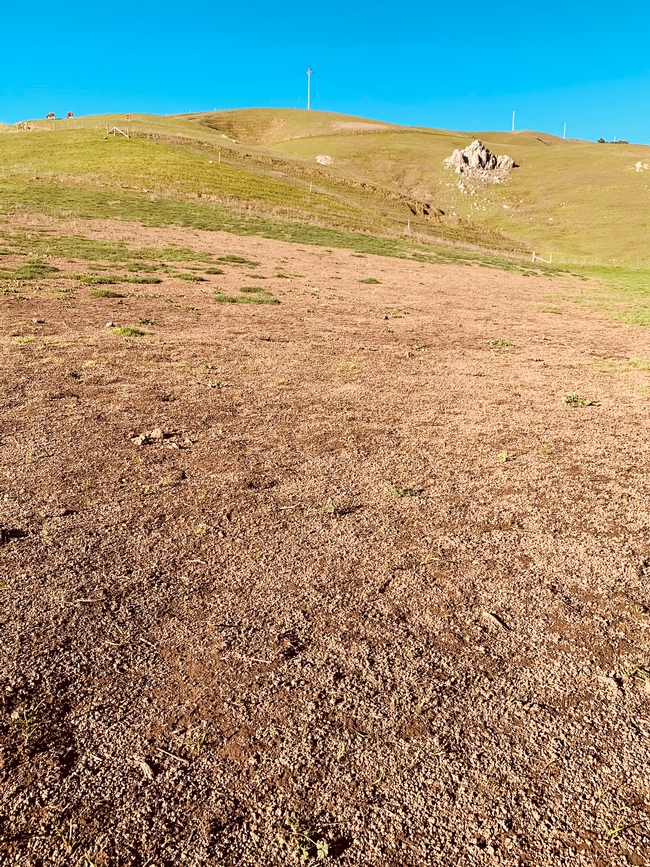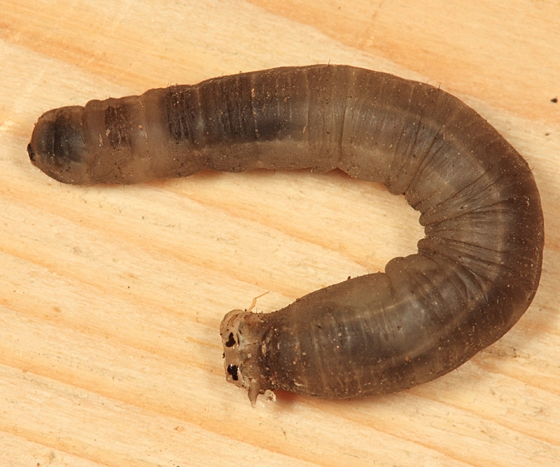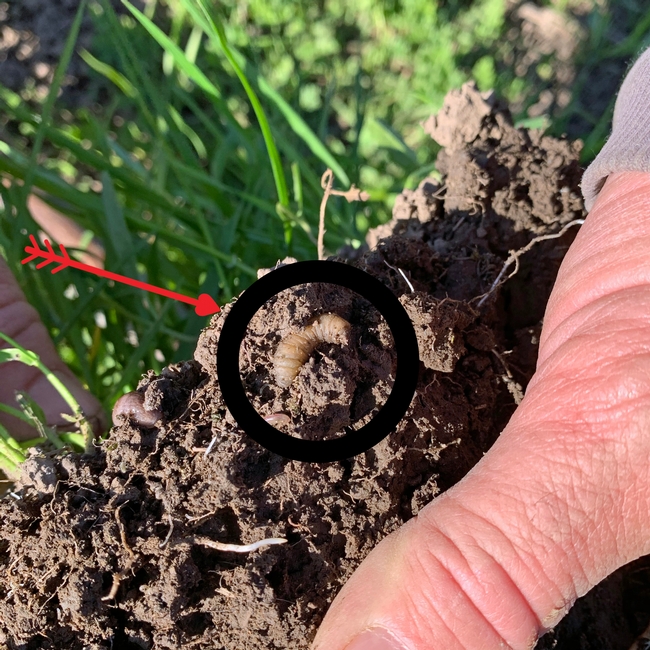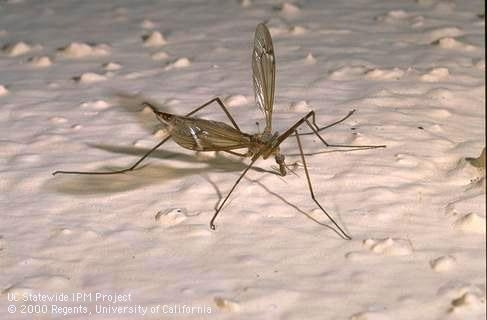Producers experiencing this damage may be eligible for assistance.
Crane flies, Tipula oleracea, are once again present on Sonoma and Marin County's range, pasture and cultivated lands this season. I have seen their presence only 3 times during my career, but when in large numbers, the done significant damage. The seasonably warm, average 68 degrees, November, followed by a December that lack proper chilling days, resulting in the survival of excessive Crane fly larvae. Weather conditions have led to current infestations on range, pasture and cultivated lands. Larvae are usually killed when a hard frost occurs during the winter season. During this season, we did not experience an adequate frost to kill the larvae; resulting in a large larvae survival.
Larvae winter in the soil, and when the weather warms, they resume feeding (and damaging fields).

Larvae are consuming forage at an alarming rate. During the day larvae mostly stay underground but on damp, warm nights they come to the surface to feed above ground parts of many plants. The larvae vary in size, but at maturity are 1 to 1 ½ inches long. Producers are reporting many areas, completely denuded of forage. In areas affect, there 100% loss. Around mid-May, larvae wriggle to the surface and the adults emerge; there is one generation a year. The larvae are the damaging stage of this pest (Figure 2).
"This is why we need Cooperative Extension; they came out to assess the damage to our silage field and quickly determined the cause of the problem. They provided assistance and support to reduce the impact of our forage losses." Jennifer Beretta, Beretta Family Organic Dairy.

Identify
To determine if these patches are from larvae infestations, dig at the edge of bare ground and grass, 1-2 inches below the surface, larvae will usually be found at the base of the vegetative layer (thatch) or in the soil just beneath the plants. They will be anywhere from ½ to 1 inches in length.
Control
Control options are limited, especially if the land is under organic production. Beneficial nematodes can be spread on the land to reduce the larvae infestations. Unfortunately, this method results in only 50% control. Organic sprays can also be used, but their efficacy has not be researched in California. Discing bare ground might expose larvae to predators such as birds and predaceous ground beetles and other natural causes. The use of chickens might also be effective if they are able to scratch the ground to get the larvae.
Bare patches of ground can be seeded, if done early. Given it is so late in the growing season, reseeding with annual species, to prevent weed infestations or soil erosion, will be the best option. You can graze the silage crop in order to recoup forage losses.
Assistance
All affected producers should contact the Farm Service Agency, Cecilia Medina, ana.medina@usda.gov, 707-644-8593, on programs for forage losses. The Emergency Livestock Assistance Program (ELAP), is available to producers when forage losses can be attributed to weather up to 180 days per year. Weather is the cause for the infestation of Tipula oleracea infestation (see table below). Contact Cecilia as soon as possible; she can assist in filing a notice of loss. Their office is located at 1301 Redwood Way, Petaluma.
|
January 2020 |
Avg. Temps 58/37| Rainfall total of 1.94 (Santa Rosa, CA) |
|
December 2019 |
Avg. Temps 57/42 | Rainfall total of 7.01 (Santa Rosa, CA) |
|
November 2019 |
Avg. Temps 68/36 | Rainfall total of 1.47 (Santa Rosa, CA) Another Frost Warning was issued on Thanksgiving night: https://www.pressdemocrat.com/news/local/10387442-181/freeze-warning-issued-for-north?sba=AAS |
|
October 2019 |
On October 30, 2019 a Frost Advisory was issued in Sonoma County; https://www.pressdemocrat.com/news/10240107-181/frost-advisory-issued-as-parts?sba=AAS |
If you are under organic certification, contact your local certifier. They need to know that you are experiencing a forage loss emergency.
If you need additional assistance, field visit or support letter of loss from UCCE, please contact me, at slarson@ucanr.edu or Randi Black, rablack@ucanr.edu
Additional Information
UC IPM Crane Fly Fact Sheet
Attached Images:

